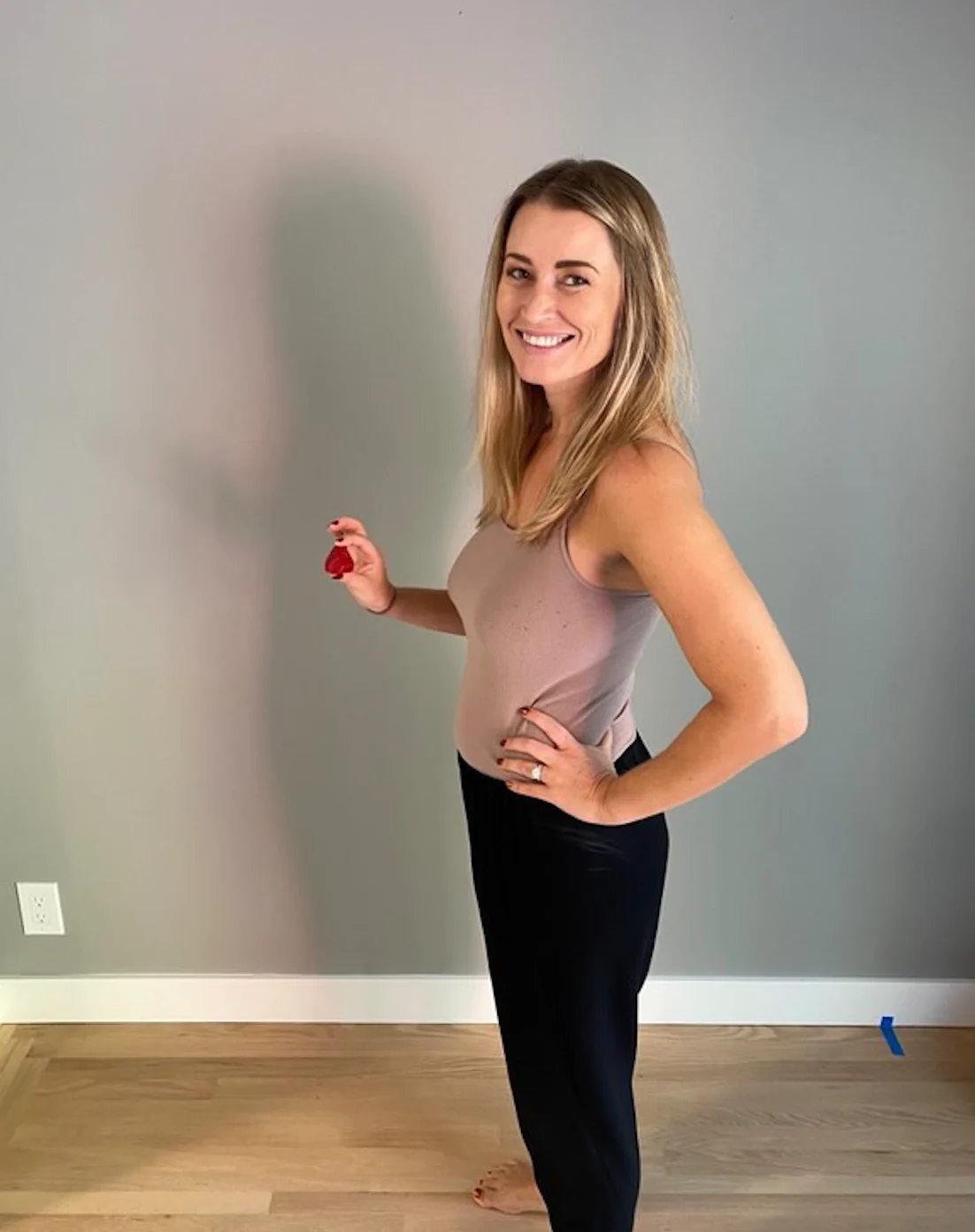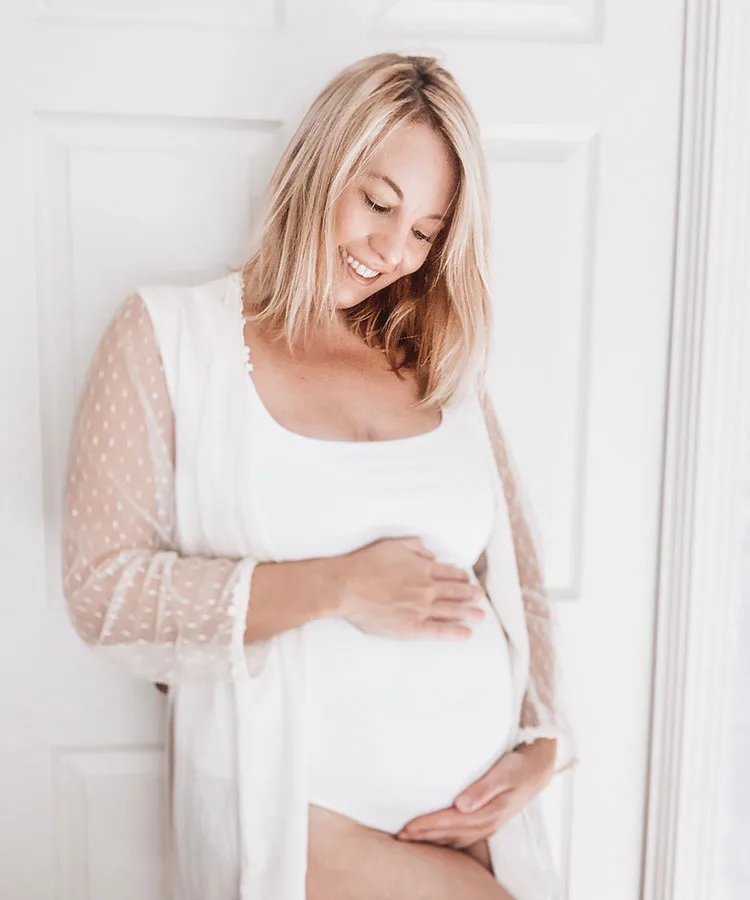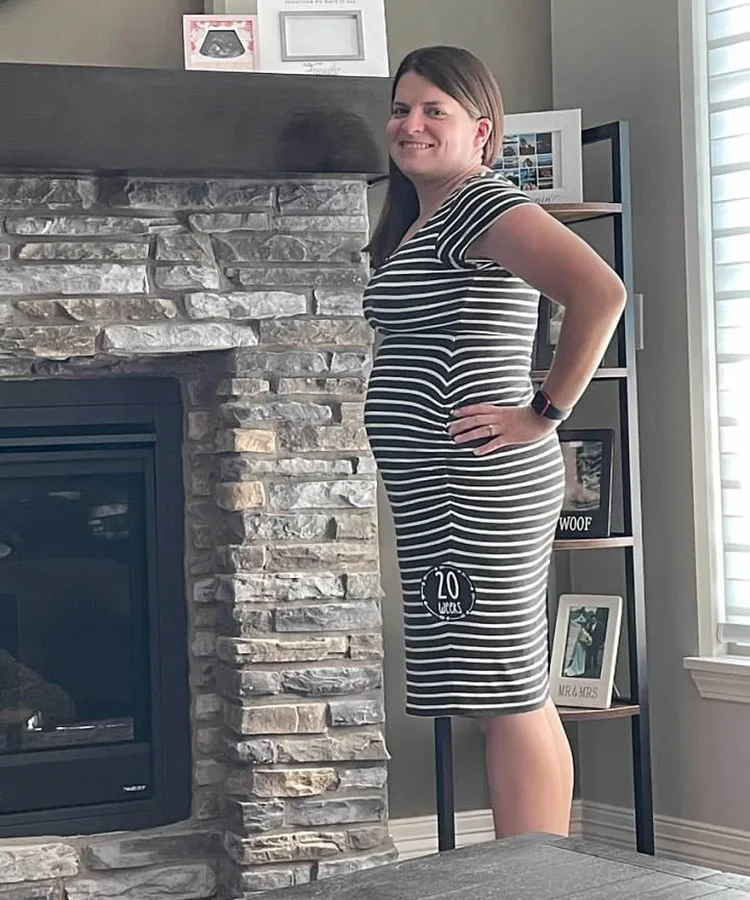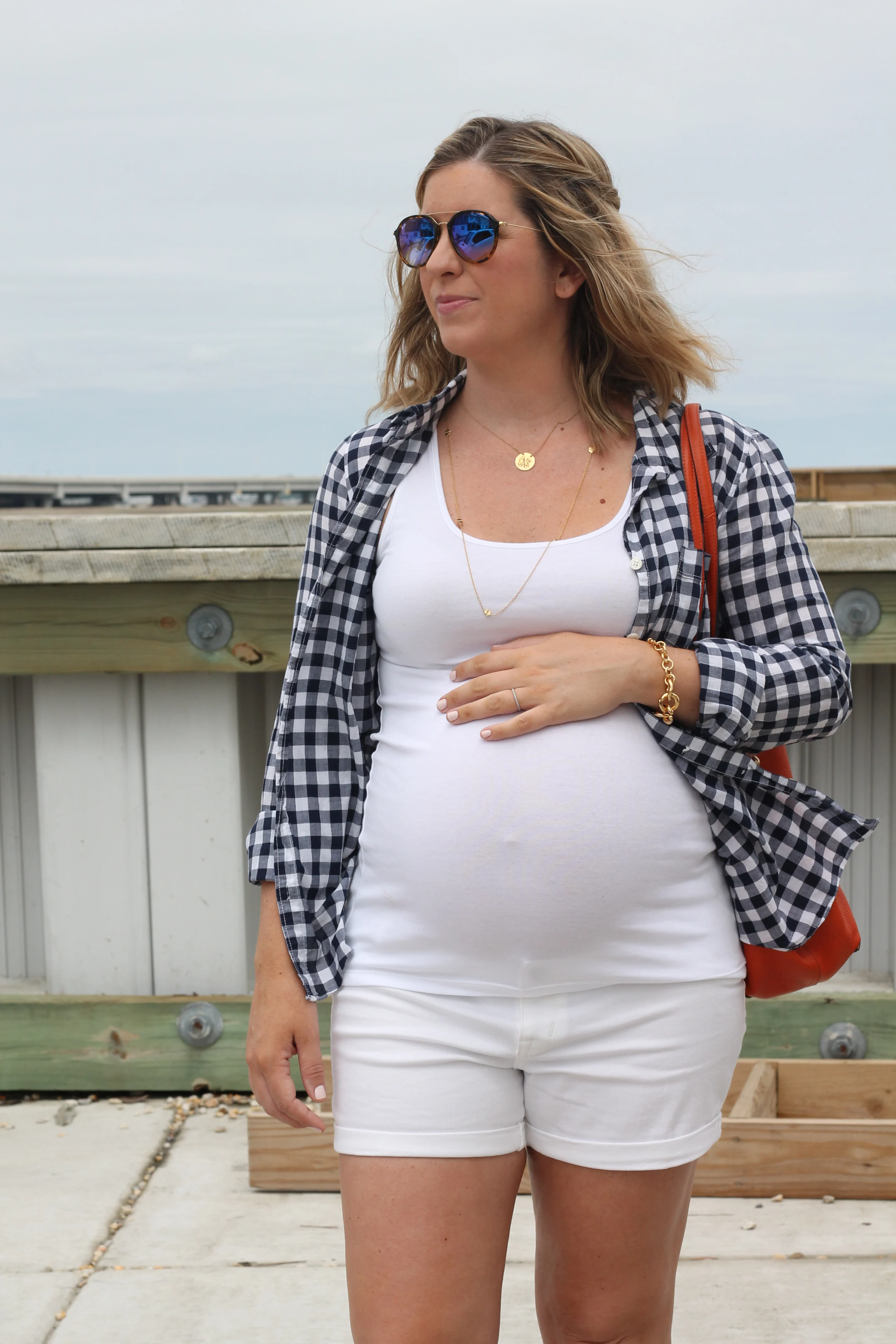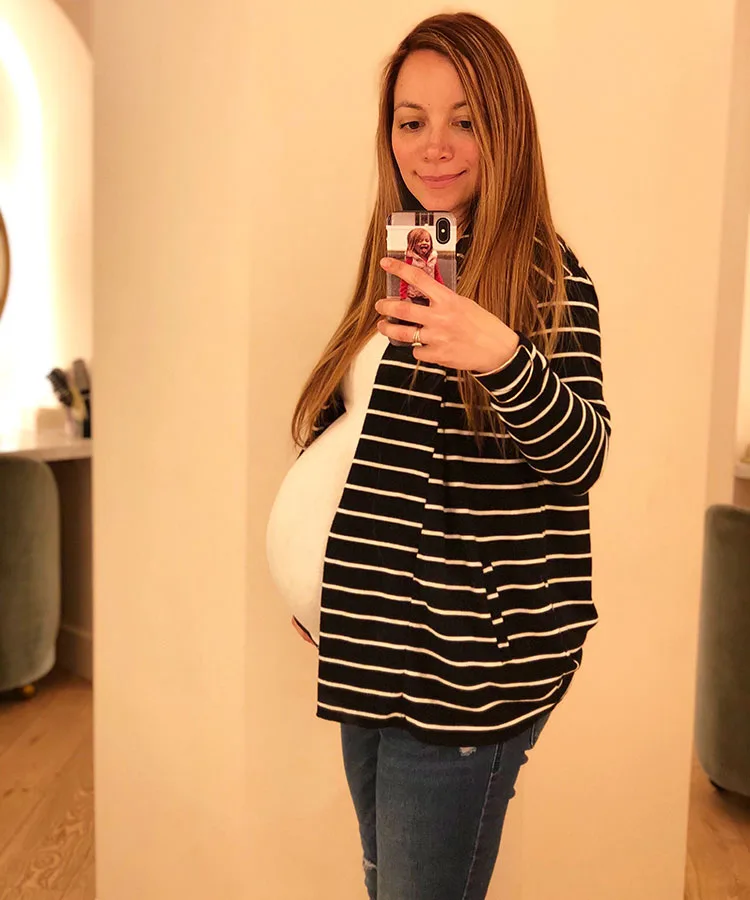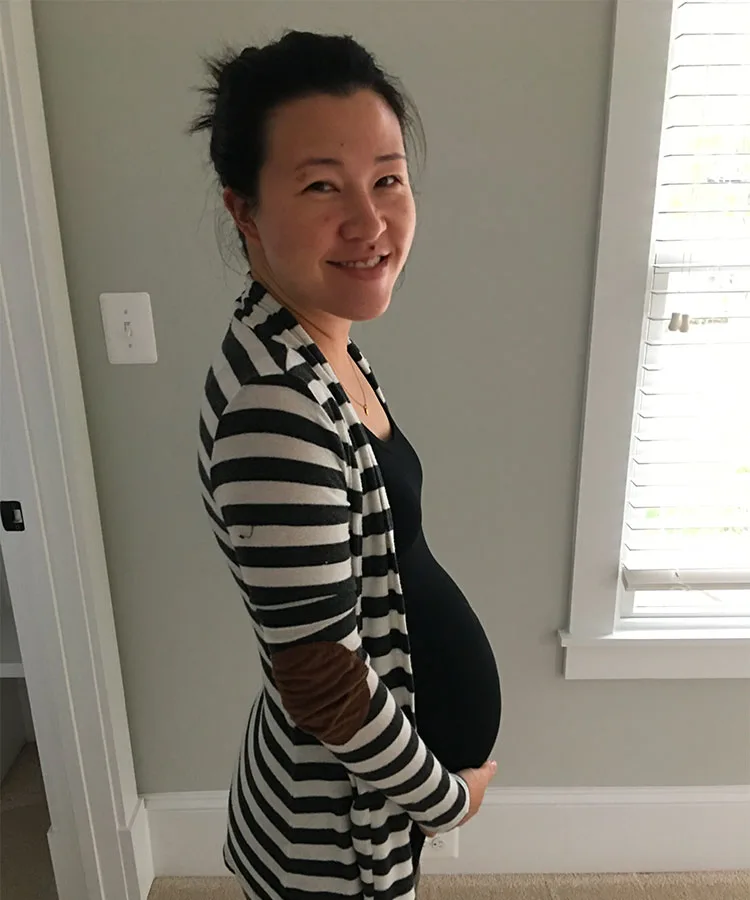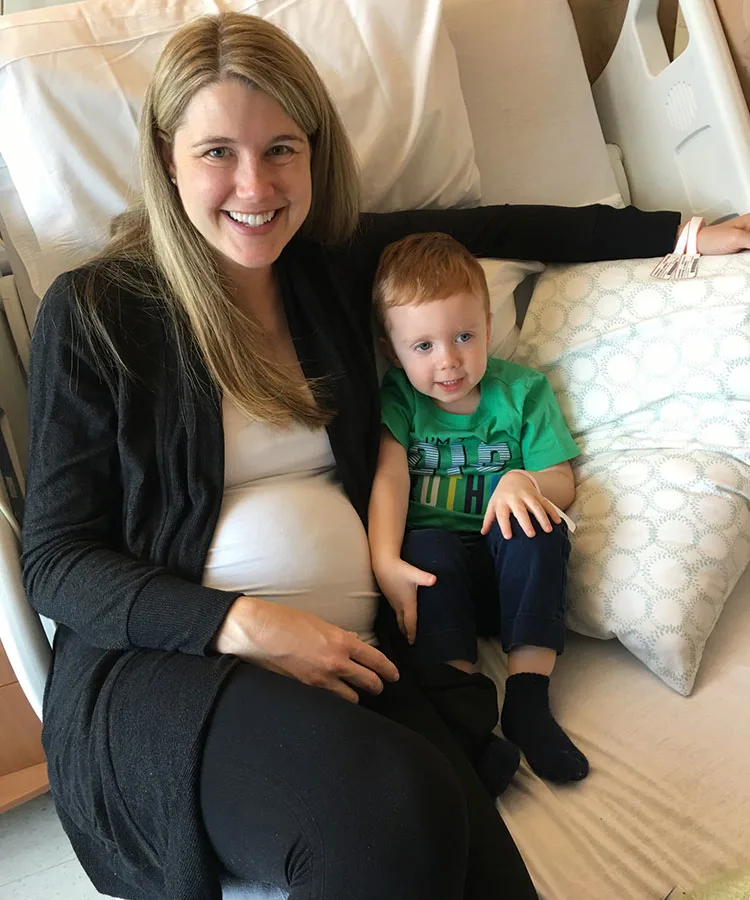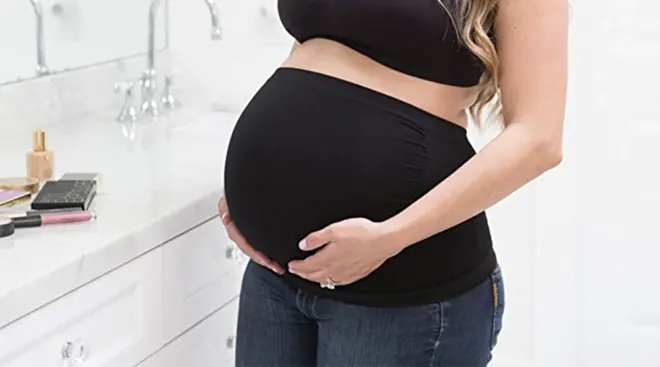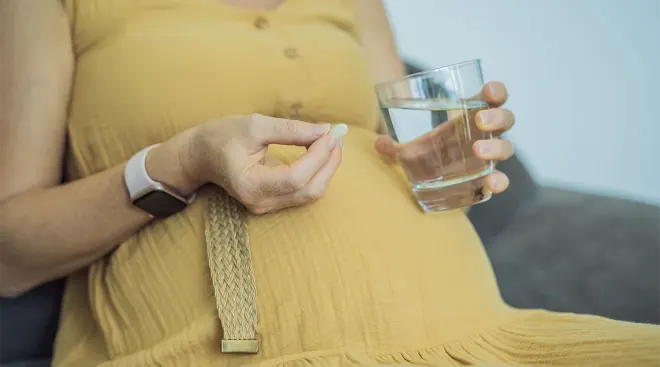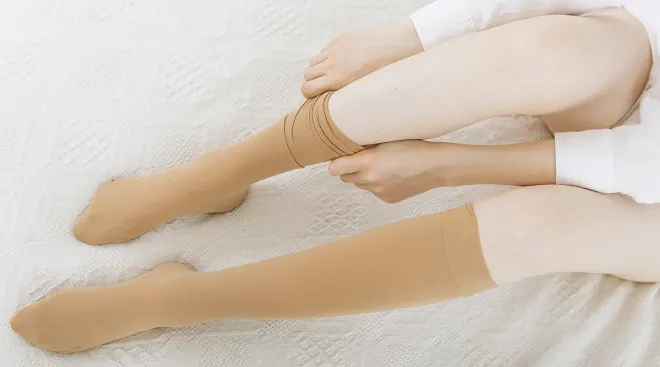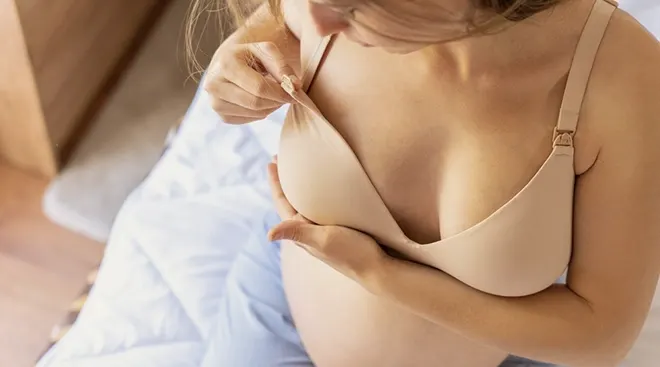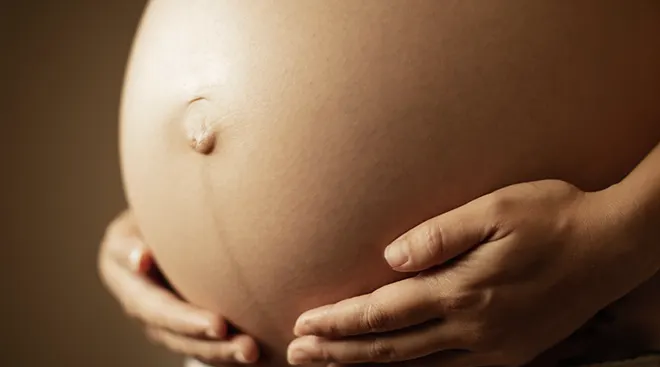
How Your Pregnant Belly Will Change During Each Trimester
While there’s (usually!) no mistaking a pregnant belly when you see one, every woman’s bump is unique. Still, how you’ll look—and when you’ll pop—as the weeks and months roll by isn’t a total mystery. You can expect a fairly predictable progression as you move through the different pregnant belly stages.
That said, don’t be too worried if your bump looks completely different from your friend’s at the same stage of pregnancy. There’s a wide range of normal. “I’m 23 weeks, and I’ve gained 20 pounds, but I still don’t look pregnant. At all. A couple of my friends who are pregnant and due around the same time look like houses, and they’ve gained less weight than me,” says The Bump community member rezelle.
Here’s what your bump may look and feel like during the first, second and third trimesters—plus, what to expect for your post-pregnancy belly. (And, yes, we’ve included plenty of pregnant belly pictures for every stage!)
Whether you’re eager to show off your budding bump or hoping to hide your pregnancy for a few more weeks, it’s natural to wonder when your belly will start to show. There’s no milestone marker, but there is a typical path of pregnant belly progression. Many pregnant people’s bellies start to show around the 20-week mark. But that’s just a rough estimate, and in fact, it’s completely normal to start showing several weeks sooner, or later, experts say.
“A woman’s own body weight distribution plays a big role,” explains Cindy Duke, MD, founder and chief executive officer of the Nevada Fertility Institute in Las Vegas, Nevada. A plus-size pregnant belly might not have a defined bump; women who carry more fat tissue around their middle might not notice a visible protrusion until their third trimester, while those with less-than-average body fat might start to show earlier.
Your age and medical history are also factors in your pregnancy belly growth. Women who’ve already given birth tend to show earlier and have bigger bumps compared to first-time moms. After a previous pregnancy, your belly muscles are not as tight and start stretching out a little quicker, Duke says.
My belly was more ‘floppy’ with my second. I think it had to do with my C-section and my abs. I look back at my first pregnancy pictures and think I actually looked cute. With the second one, I just look large and very, very tired.
Other things can affect the size and shape of a mom-to-be’s bump: Being pregnant with twins or multiples will, of course, result in a bigger pregnancy belly bump that appears earlier, says Duke. What’s more, baby’s position can potentially cause a bump to appear wider.
It’s your little secret for now, and while others won’t know you’re expecting just by looking at you, it’s possible you might notice a difference in your belly during those first few weeks.
How your pregnant belly looks during the first trimester
Baby is growing and your uterus is expanding every day, of course. But both are still so small that they’re not all that noticeable from the outside. (Even at 13 weeks, your little one is only the size of a lemon!) That said, “your uterus is starting to push your intestines and stomach upwards, so you start to have this bloated appearance and your pants might not fit as comfortably,” says Marquita Anderson, MD, an ob-gyn in Mansfield, Texas, affiliated with Christus Southeast Texas Hospital-St. Elizabeth.
Bloating can affect the way your early pregnancy belly looks too. Surging hormones, plus minerals like the iron in your prenatal vitamin, can lead to gas and constipation, which can make your stomach look more puffed out than usual. The veins around your belly might start to be more prominent too, as your body makes more blood to support your growing baby. Nevertheless, you’re probably the only one who’ll notice this change.
The bloat almost makes me look like I'm showing, which is frustrating because I'm not even 6 weeks and really want to hide this pregnancy at work. I remember feeling this way with my first too…the blob-y feeling eventually subsides and the cute bump emerges!
How your pregnant belly feels during the first trimester
You may very well feel pregnant (hello, morning sickness and fatigue during the first trimester. Again, bloating might also be an issue.
It’s a great time to start taking weekly milestone belly photos. It’s true that your 8-week pregnant belly picture won’t show much, but you’ll appreciate the photographic evidence of progression throughout the weeks and months.
3 months pregnant belly
You still might not notice much of a bump when your second trimester starts. But by midway through, that’ll likely start to change—and by the trimester’s end, you’ll likely have a sweet, rounded belly. That said, everyone’s different. “I’m not showing even at over 25 weeks,” says The Bump community member wilma007. “I asked my doctor at my 24-week checkup, and all he said was ‘it happens’. He even mentioned a woman in his early practice that didn’t pop until she was in her 30th week. So it evidently does happen. I just wish it didn’t happen to me!”
How your pregnant belly looks during the second trimester
Around the 20-week mark your uterus will have grown up to your belly button, which for many women causes their belly to noticeably protrude or pop. “For some people it can feel like it happens overnight. One day you just reach this threshold where it seems like everybody is noticing,” Anderson says. Even then, it’s more your expanding uterus than the baby that’s giving you that round look, she notes. At 20 weeks, baby is still less than a pound and only about the size of a banana. And when your bump first becomes visible, it’s normal for it to seem like it’s growing more upwards than outwards, Duke explains. (That’s your stomach and intestines being pushed up to make more room for your uterus.)
It’s not just the size of your bump that’s really changing these days. Some time during your second trimester, you might start to notice a dark, vertical line running down the center of your abdomen. That’s your linea nigra, a common but harmless pigmentation caused by changing hormones. This pregnant belly line will typically fade within a few months after giving birth.
How your pregnant belly feels during the second trimester
Wondering why your pregnant belly sometimes feels hard and other times feels soft? Don’t worry, that’s par for the course too. Many women in their second and third trimesters start to notice Braxton-Hicks contractions, sporadic “practice” contractions caused by the tightening and relaxing of your uterine muscles. These occasional, irregular spasms aren’t anything to worry about, and they’re not a sign that your body is going into labor. Call your doctor, though, if the contractions start to feel like they’re coming in regular intervals, go on for more than an hour or become progressively stronger or closer together, Anderson says. Those could be real contractions, which could be a sign of preterm labor.
4 months pregnant belly
5 months pregnant belly
6 months pregnant belly
You’re in the home stretch now, and your bump might be feeling stretched to the brink too. By 28 weeks, your uterus—and your bump—has extended well above your belly button, Duke says.
How your pregnant belly looks during the third trimester
All of the fast growing and stretching can cause the skin around your belly (as well as your breasts, hips, butt and thighs) to develop—you guessed it—stretch marks. There’s not a whole lot you can do to prevent them, especially if they tend to run in your family, according to the American Academy of Dermatology. But trying not to gain more than the recommended amount of weight can help, says Anderson. If your body and pregnant belly stretch marks are itchy, regular moisturizing can provide relief.
The appearance of your navel may change too. If you’ve had an “innie” your whole life, you may be surprised to find that one day your pregnant belly button will just pop out! All that pressure on your abdomen may give you a temporary “outie;” it should return to its normal position a few weeks or months after you give birth.
My belly must have looked dramatically large because I got ‘you must be having twins!’ comments every five seconds. My fundal height and weight gain overall were completely normal, but the way my belly looked on my frame and the way I carried made it really pop. I enjoyed every minute of it though!
How your pregnant belly feels during the third trimester
At this stage, if your pregnant belly feels tight and heavy, consider yourself an official member of the third-trimester club. As baby starts to put on more inches and ounces, they’ll continue pushing your belly outwards, creating a sensation of fullness or tightness in your tummy. (Between 28 and 40 weeks, your cutie will grow from the size of an eggplant to a small pumpkin!) “You’re experiencing maximal distension of the uterus, skin, and abdominal muscles because the baby is taking up so much space,” Anderson says.
Last night at dinner, the waiter asked whether I was pregnant or ‘just really like beer.’ I can't say I’ve heard THAT one before!
Toward the last few weeks or days of your pregnancy, you might notice your bump starting to sit a bit lower. A suddenly low pregnant belly may mean that baby is “dropping,” or descending more deeply into your pelvis as your body prepares for labor and delivery, Anderson explains. That dropping, also called “lightening,” can cause you to have a feeling of pressure in your pelvic region; if it becomes painful, let your doctor know.
Speaking of pain, some women get uncomfortable twinges in their belly button during the third trimester. Experts don’t fully understand why this happens, but it’s common and not typically cause for concern, says Anderson. It’s thought that the sensitive nerves and tendons around the belly button could be triggered when baby switches positions, causing a quick, sharp pain, she explains.
7 months pregnant belly
8 months pregnant belly
9 months pregnant belly
Once you deliver baby and the placenta, that full, hard belly might not look exactly the way it did throughout your third trimester. But it won’t look the way it did pre-pregnancy either. After birth, it’s normal for your belly to remain swollen for two to six weeks as your uterus shrinks back down to its pre-pregnancy size, Anderson says. As this happens, you might experience occasional dull, period-like pains.
All the while, your belly might feel unrecognizably soft, squishy and almost, well, empty. It can take some time to get used to not having a baby in there—plus, you’ll find that your abdominal muscles are stretched and weak, Anderson explains. They’ll often start to tighten on their own in the coming weeks, but if you notice your belly continues to protrude several months after giving birth, you may have abdominal muscle separation, or diastasis recti, says Duke. (Don’t worry though—there are ways to close that gap.)
Keep in mind that just because your uterus has more or less shrunk back down to its pre-pregnancy size by six weeks postpartum—according to the American Pregnancy Association (APA)—your belly probably won’t look the way it did before you became a mom. Your skin might still be loose or stretched, and it may take months or more for you to lose the weight you gained, experts say. That’s completely normal—and not something you need to stress about. After all, you just built a new person and are now focused on caring for them 24/7.
Post-pregnancy belly pictures
For 40+ weeks, you grew a human inside your belly. The so-called fourth trimester is a physical and emotional adjustment. This period of transition can feel awkward; you won’t look pregnant per se, but you definitely don’t look not pregnant either. Either way, embrace the incredible thing your body just did and celebrate your post-pregnancy belly. Here’s what it might look like hours, days and weeks after birth:
Some women are smitten with their bump from the get-go and others have mixed emotions about their changing bodies throughout the different pregnant belly stages. While all the feelings are normal, resist the urge to compare your someone else’s; moreover, it may be different for you from pregnancy to pregnancy. “Bumps are a beautiful thing, but no person should obsess about their bump size or stress over them. Every body is different,” Duke says.
Instead, focus those energies on taking care of yourself and attending all of your prenatal appointments to have the healthiest pregnancy possible, Duke suggests. And don’t forget to snap a few pictures of your bump as it grows. Months or years from now, you (and your little one!) will be glad you did.
Frequently Asked Questions
Why am I not showing yet?
It’s typical to start showing around the 20-week mark—but that’s a rough estimate and you might start showing earlier or later. If you’re on the slender or petite side, you might start to show earlier, while if you’re curvier you may not notice a bump until later, according to Lamaze International. Additionally, if it’s your first pregnancy you might not show as quickly because your ab muscles are typically tighter, says Christine Greves, MD, an ob-gyn at the Orlando Health Women’s Institute. She adds that if you’re not showing as expected, sometimes your due date may not have been calculated correctly. At the end of the day, when you start showing in pregnancy is very individual and depends on a variety of factors.
What does the shape of my pregnant belly mean?
While the shape of your pregnant belly can vary based on your anatomy, there’s no special meaning to it, says Greves. (Sorry, it can’t tell you baby’s sex!)
What is a B-shaped pregnant belly and what does it mean?
A B-shaped pregnant belly is a double belly—it has a crease in the middle. It’s more common if you’re heavier or have had previous pregnancies, particularly close together. It won’t affect the health of your pregnancy or delivery outcomes.
Why is my belly so big at 6 weeks pregnant?
You’re not really showing yet this early on. “Most of the time it’s due to bloating and hormonal changes,” such as an increase in progesterone, says Greves. “The uterus is still inside the pelvis during the first trimester.”
“My first pregnancy, I didn't get any kind of bump until 16 weeks,” shares The Bump community member MsHenry30. “Second pregnancy, I started popping out a little at 9 weeks but still not really noticeable. This time, I'm almost afraid to hang out with anyone because I'm afraid they'll guess, lol. I'm only 7 weeks, but at night I look like I'm 4 to 5 months with all the bloat.”
Why is my pregnant belly sometimes hard and sometimes soft?
Again, this is pretty normal and typically due to a Braxton-Hicks contraction—aka a practice contraction caused by your uterine muscles tightening—says Greves. These aren’t necessarily painful, but you may get a squeezing sensation.
When does your belly button pop out when pregnant?
Typically this happens during the second trimester, around week 26, according to Cleveland Clinic. Some people will notice their “innie” turning into an “outie,” while others will have a flattened belly button.
Why does my pregnant belly look smaller some days?
Yes, it’s absolutely normal for your pregnant belly size to change depending on bloating, baby’s position and more. Make sure to talk to your provider if you have any concerns.
How do you measure a pregnant belly?
The most common way to measure a pregnant belly is fundal height, defined as the distance between the top of your uterus and your pubic bone. It’s usually measured starting at 20 weeks in pregnancy. This measurement tells your provider about baby’s size, growth and position in your uterus. Between 20 and 36 weeks, your fundal height should be the number of weeks you are in pregnancy, plus or minus 2 centimeters, according to Cleveland Clinic.
It’s amazing to see your pregnant belly grow from week to week. We’re looking to feature even more baby bump photos in our Pregnancy Week by Week content series to highlight the diverse physical changes that each week of the journey may bring. Do you have any belly images you’d like to share with us? Click here to submit your images. Thanks for being a part of our community!
Please note: The Bump and the materials and information it contains are not intended to, and do not constitute, medical or other health advice or diagnosis and should not be used as such. You should always consult with a qualified physician or health professional about your specific circumstances.
Plus, more from The Bump:
Marquita Anderson, MD, is an ob-gyn in Mansfield, Texas, affiliated with Christus Southeast Texas Hospital-St. Elizabeth. She earned her medical degree from The University of Texas Health Science Center at Houston.
Cindy Duke, MD, PhD, FACOG, is founder and chief executive officer of the Nevada Fertility Institute in Las Vegas, Nevada. A dual fertility specialist and virology expert, she earned her medical degree from the University of Rochester School of Medicine & Dentistry in Rochester, New York.
Christine Greves, MD, FACOG, is an ob-gyn at the Orlando Health Women’s Institute. She received her medical degree from the University of South Florida College of Medicine.
Lamaze International, When Will I Start Showing in Pregnancy?, 2023
Cedars-Sinai, Pelvic Congestion Syndrome
Cleveland Clinic, Fundal Height, January 2022
Cleveland Clinic, Pregnancy Discomforts, September 2023
American Academy of Dermatology, Stretch Marks: Why They Appear and How to Get Rid of Them
Cleveland Clinic, Why Do Some People’s Belly Buttons Pop Out During Pregnancy?, March 2019
March of Dimes, Your Body After Baby: The First 6 Weeks, September 2023
American Pregnancy Association (APA), Postpartum Recovery
International Journal of Environmental Research and Public Health, Body Acceptance by Pregnant Women and Their Attitudes Toward Pregnancy and Maternity as Predictors of Prenatal Depression, December 2020
Dr. Deepti Asthana, What Is A B-Belly During Pregnancy?, December 2021
Real-parent perspectives
- Natalie Gontcharova, senior editor at The Bump and mom of one
- berrysweet
- maplehearts
- MsHenry30
- NYCaliMama
- rezelle
- wilma007
Learn how we ensure the accuracy of our content through our editorial and medical review process.
Navigate forward to interact with the calendar and select a date. Press the question mark key to get the keyboard shortcuts for changing dates.

































